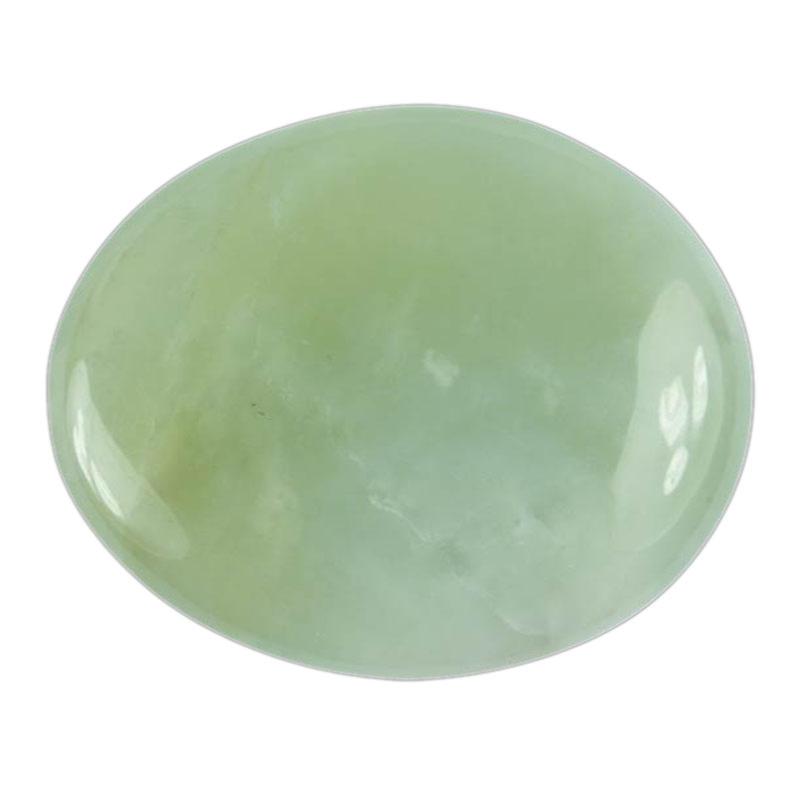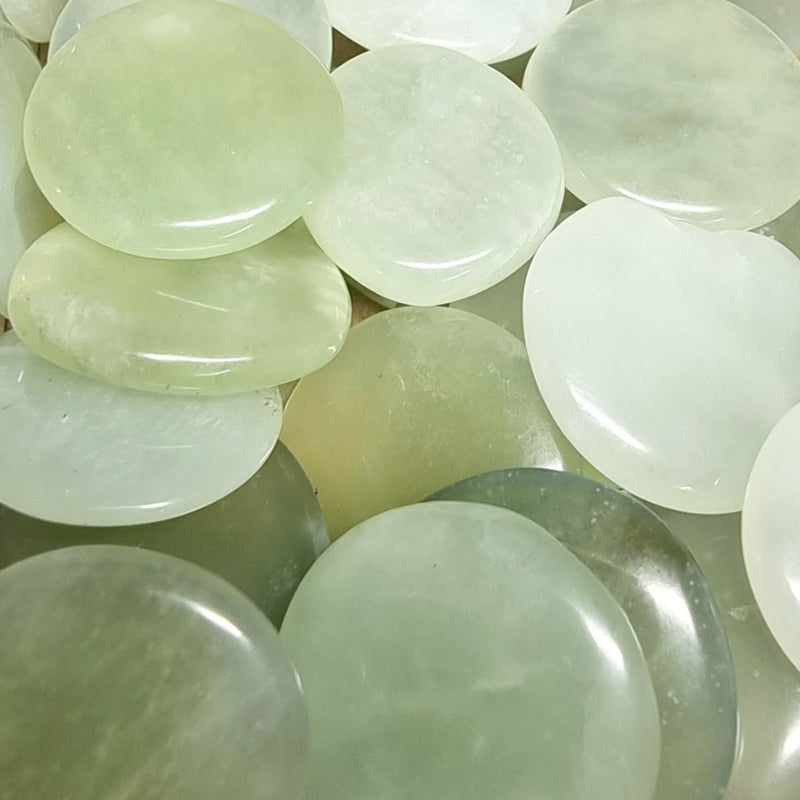Jade pebble from China A
JADV-G-01
- Regular price
-
7,90 € - Regular price
-
7,90 € - Sale price
-
7,90 €
Couldn't load pickup availability
Learn more
JADV-G-01
Origin: China
Grade: A
Weight:
Between 20g and 30g
Origin:
China
Grade:
A = good
Jade pebble from China about 30-40mm
Patterns and colors may vary from stone to stone.
This beautiful stone, most commonly known by its green color, received its name from the conquistadors in the 15th century. They named it “piedra de ijada” or “stone for the pit”. The pit designates the iliac fossa because of Native American legends that said that jade cured the kidneys and renal colic. In addition, it was also attributed the power to ward off evil spirits.
This stone with a hardness between 6 and 7 on the Mohs scale, then depending on its variety is commonly used for carving ornamental objects or in jewelry. It turns out that under this name of jade are three kinds of minerals. Their difference comes from their composition, however, they are very similar in appearance. These are jadeite, nephrite and kosmochlor.
In 1863, Alexis Damour, a French mineralogist, differentiated two mineral specimens under the name jade. He called the first “jadeite” and the second “nephrite” from the Latin “lapis Nephriticus” or “flank stone” still in reference to the Native American legend. In 1897, the German mineralogist Hugo Laspeyre observed a third variety: kosmochlor, from the German “kosmischle” meaning “cosmic” and “Khlôr” designating the green color. In fact, this mineral comes from a meteorite that fell in Toluca, Mexico.
The main minerals constituting jade are therefore nephrite (composed of calcium and magnesium silicate) and jadeite jade (composed of sodium and aluminum silicate). Although jadeite is often associated with green, there are a large number of other colors, including white, black, pink, blue-green, dark green, green-black, blue, emerald green, lavender, red, orange. Completely pure jade is white, it is the presence of impurities or inclusions (titanium, manganese, chromium, iron) which give it these colors.
Nephrite jade varies in color from creamy white to dark olive green, brown, or black. It has a surface that appears to be covered with a light, smooth varnish. In China, jade has always been considered a precious stone, or “the imperial stone.” The two minerals, jadeite and nephrite, that make up jade have had different uses. Nephrite has been known and used in ancient China for thousands of years. However, a deposit of jadeite was mined in Burma in 1800. From that time on, Burmese jadeite became the preferred form of imperial jade.
While in the West, diamonds, rubies and emeralds represented the gemstones worn by noble people, in China, high-ranking figures wore nephrite jade stones as a symbol of wealth.
About 4,000 years ago, jade was used to make weapons, everyday objects such as cups, plates, and even buttons, ornamental or ritual objects. The Egyptians gave jade as an offering to their goddess of justice, Maat. The Celts of Ireland represented their goddess of the feminine, Brigit, in jade stone.
The Greeks associated jade with the Moirai, the three goddesses of fate who accompanied men from birth to death. They used the healing properties of jade to treat eyes, snake bites, insect bites or stomach aches.
For the Romans, jade was associated with the goddess of earth and fertility, Bona Dea.
But it is in China that jade has the most legends, symbols and medicinal uses. It represented the absolute power of the emperor. He had a jade scepter and each of his five princes had a jade tablet. Every year, a ceremony took place and the emperor took back the tablets. If he wanted to keep his princes, he returned the tablet to them. But he could also take them back and give them to other princes. In Chinese mythology, jade symbolized the dried sperm of a dragon. A jade cicada was placed in the mouths of wealthy deceased people, thus preventing decomposition and promoting reincarnation.
The main jade deposits are located in China.
Chinese jade is a stone of abundance that brings prosperity to its wearer. It facilitates openness to others by promoting compassion, constructive exchanges and empathy. It thus engenders understanding and acceptance of oneself and others.
Chinese jade fights against nervousness, stress, negative energies such as anxiety, worry and lack of self-confidence. It causes optimism and well-being. This stone engenders honesty and gives a sense of justice.
It is a stone that facilitates introspection and helps to understand certain buried guilts. Thus, it provokes assurance and allows to approach life with much less brakes. It helps to refocus and listen to one's inner voice. It is a stone that develops intuition.
Chinese jade soothes negative tensions and anger. When there are difficulties or misunderstandings with your child, it can encourage dialogue and communication in order to find a solution.
A stone of justice and morality, Chinese jade is often worn during negotiations, whether commercial or personal. It guides towards wisdom and legitimacy. It allows one to detach oneself from the judgment of others and to moderate one's words. This stone gives the courage to face life's difficulties with serenity and conviction.



Jade pebble from China A
- Regular price
-
7,90 € - Regular price
-
7,90 € - Sale price
-
7,90 €
-
100% SECURE PAYMENT
Paypal, credit card, check, transfer
-
FREE DELIVERY
from 40€ purchase
-
SATISFIED OR REFUNDED
14 days to change your mind
-
CUSTOMER SERVICE AVAILABLE
contact@laboiteacailloux.com
to receive all our offers, good deals and new products from La Boite à Cailloux



